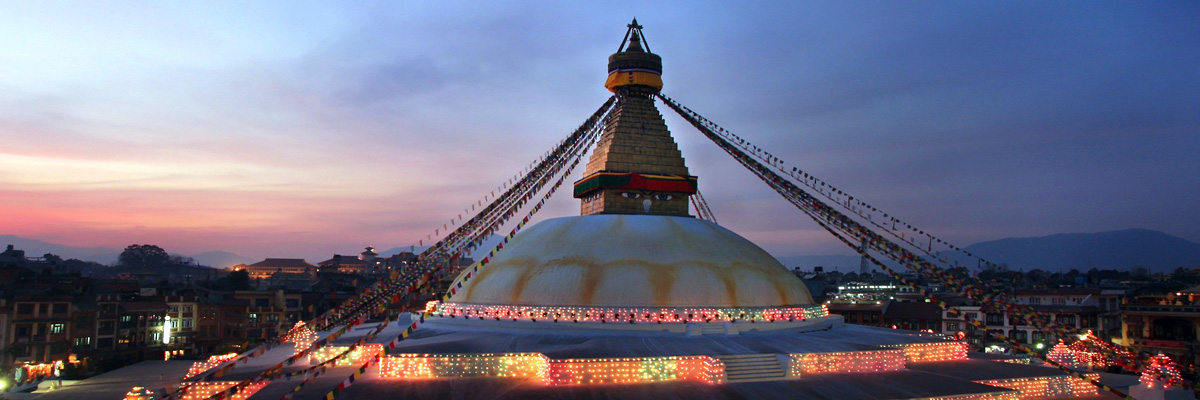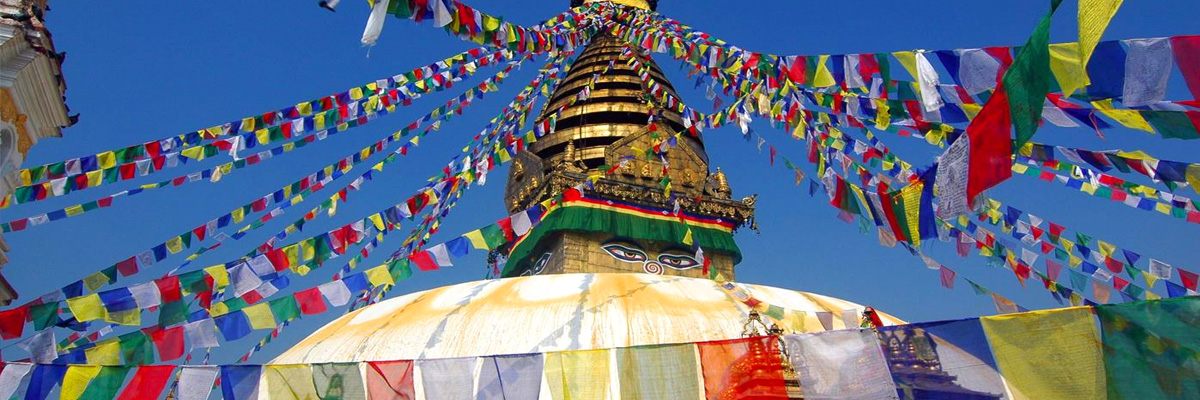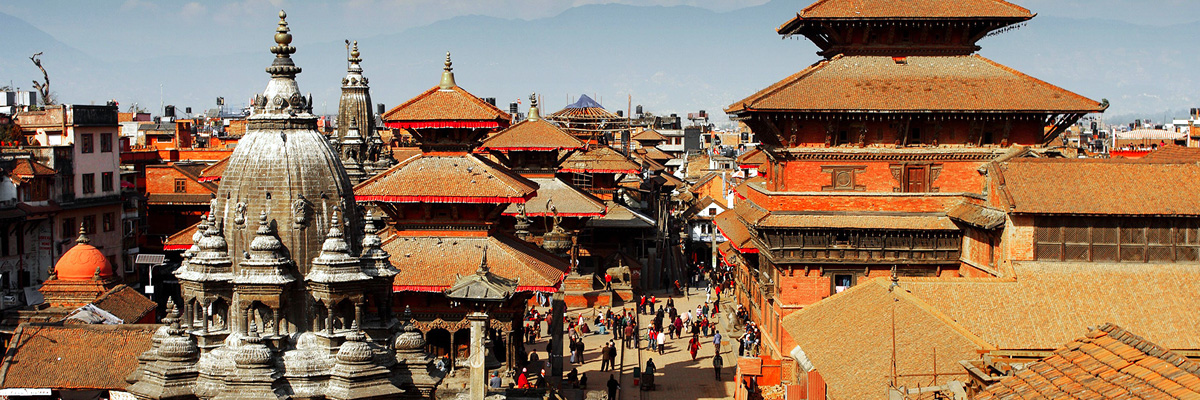Phone: +91-8880009697
Mail: sales@agnaholidays.com
Upon arrival meeting and assistance at the airport and transfer to hotel. Office representative collects 2 copies of Passport size photo and Passport copy to make the trekking permit. Rest of the day at leisure. Overnight stay is at the hotel in Kathmandu.

Breakfast at Hotel. Transfer to domestic airport for heli fly to Jomsom. One hour Muktinath temple darshan and fly back to Kathmandu by heli charter.

Pashupatinath Bouddhanath stupa Swayambhoo Nath Basantpur Durbar Square Patan Durbar Square evening free.
Pashupatinath: This is Nepal’s most sacred Hindu shrine and one of the subcontinent’s great Shiva sites. The supreme holiness of the site stems from the Shiva linga enshrined in its main temple and its location. It expresses the very essence of Hinduism as pilgrims, priests, devotes, temples, ashrams, images, inscriptions and cremation ghats intermingle with the rituals of daily life, all sprawled along the banks of the sacred Bagmati River. The temple’s origins are obscure, an inscription dates from 477, but a shrine may have stood here for 1000 years before that.
Boudhanath: This great stupa is one of Nepal’s most distinctive monuments and one of the most important Buddhist sites in Nepal and, with a diameter of over 100 meters, amongst the largest in the world. There are a number of legends accounting for the stupa’s construction, but it is generally believed to date from the 5th century. All stupas contain holy relics and Boudha is said to contain the remains of the past Buddha Kasyapa.
Bouddha is a particular focus for Kathmandu’s Tibetan community and throughout the day there is a constant stream of people circling the stupa spinning prayer wheels and reciting mantras. Surrounding the stupa are six major monasteries and a host of smaller ones as well as cafes, restaurants and shops selling Tibetan carpets and Newari silversmiths.
Swayambhunath: The most ancient and enigmatic of the Valley’s holy shrines the golden-spired stupa of Swayambhunath tops a wooded hillock. Records of its history date as far as the 5th century, but its origins are believed to be older. It is the Kathmandu Valley’s most sacred Buddhist shrine and whilst its worshippers include the Vajrayana Buddhists of northern Nepal and Tibet, Newari Buddhists are the most fervent devotees.
Kathmandu Durbar Square: Kathmandu’s number one tourist attraction swarms with life. Though a few of the square’s 50-plus monuments date from the 12th century, most are from the time of the Malla Kings. Probably the most famous building here is the KumariBahal, a building richly decorated with beautiful woodcarvings, which is home to the Royal Kumari, the Living Goddess, a manifestation of the great goddess Durga. Nearby the former Royal Palace is a Mall Dynasty dwelling, once considerably more extensive than today. Within, the courtyard Nassal Chowk, originally hosted dramatic dance performances, now it is the coronation site of the Shah kings and contains some of the finest wood carvings you will see anywhere in the kingdom.
Overnight at Hotel in Kathmandu

Today in time transfer to Kathmandu International airport to board your flight for onwards journey.
“Tour Concludes Here”